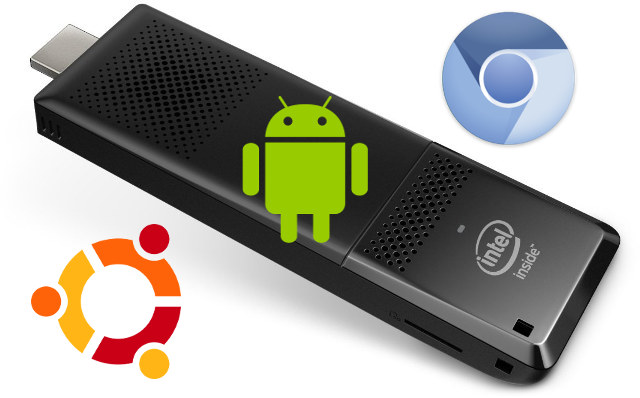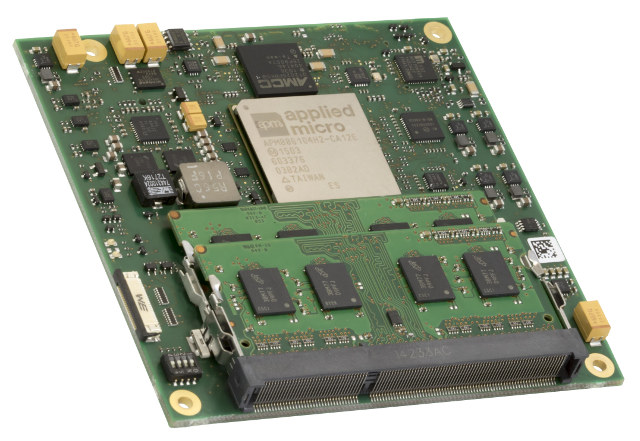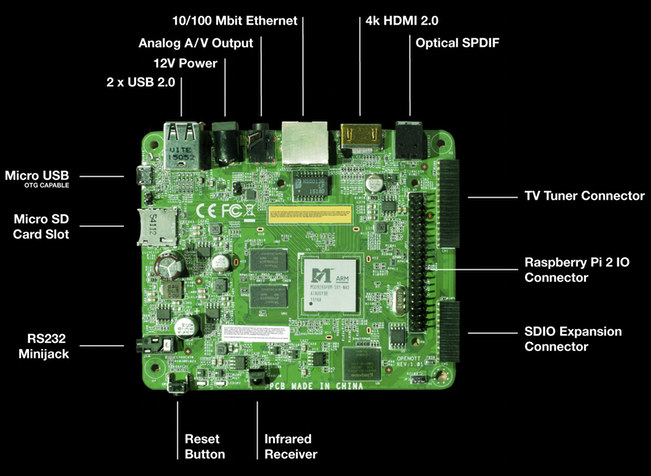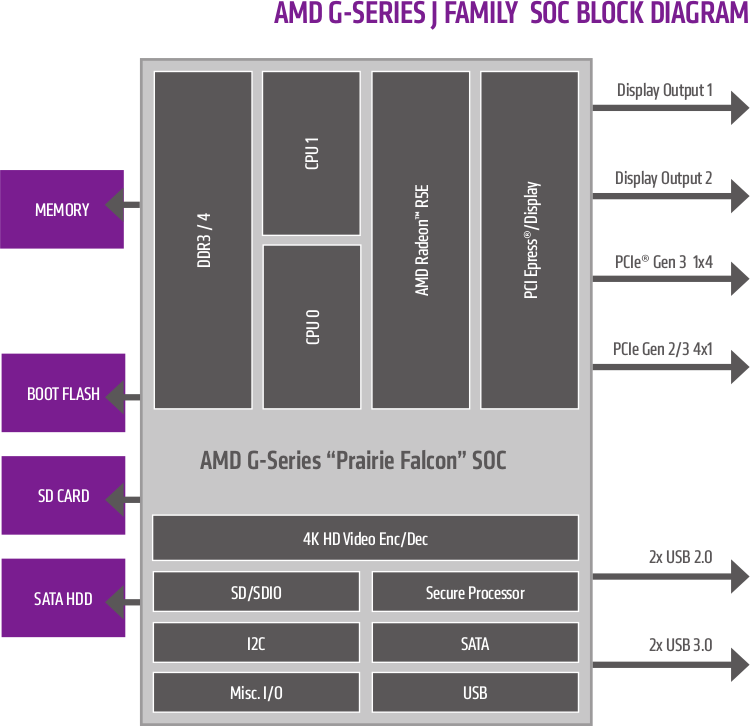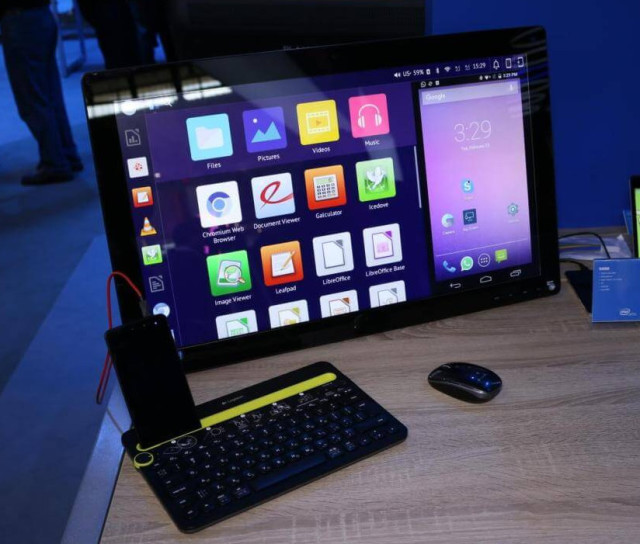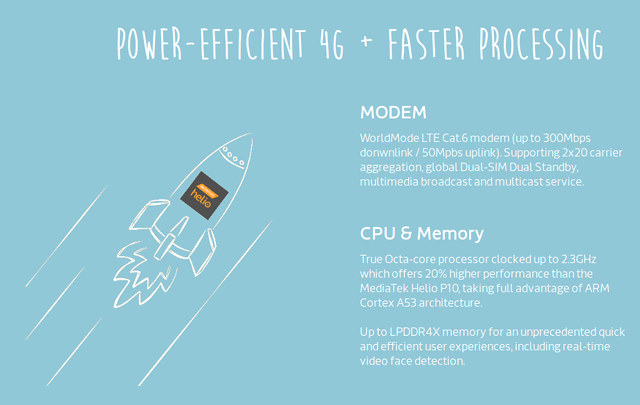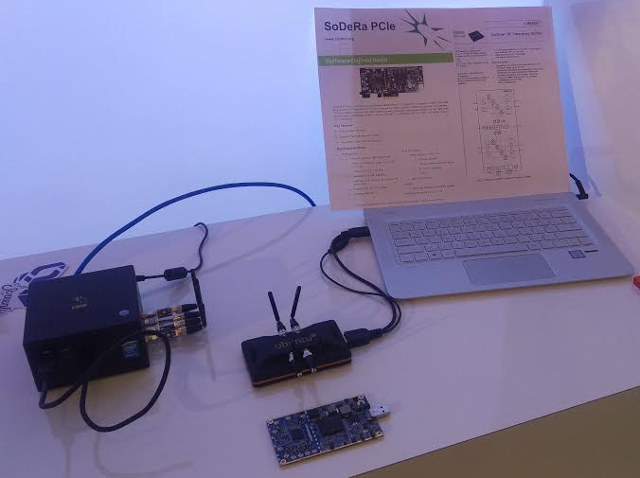Silicon Labs has introduced three new Wireless SoC families with Blue Gecko for Bluetooth Smart, Mighty Gecko for Thread & Zigbee, and Flex Gecko for proprietary 2.4 GHz protocols. All three families provides up to 19.5 dBm output power & hardware cryptography, and are pin-to-pin and software compatible. SiLabs Wireless Gecko SoC highlights: MCU Core – ARM Cortex-M4 @ 40 MHz with FPU, up to 256 KB flash, and up to 32KB SRAM. Mighty Gecko also adds a DSP Peripherals AES256/128 Hardware Crypto Accelerator ADC (12-bit, 1 Msps, 286 µA) Current DAC (4-bit, Current Source or Sink) 2x Analog Comparator Low Energy UART 2x USART (UART, SPI, IrDA, I2S) I2C (Address recognition down to EM3) Timers : RTCC, LE Timer & Pulse Counter 12-channel Peripheral Reflex System Up to 31 GPIO EFR32BG Blue Gecko Family Bluetooth Smart (Bluetooth Low Energy or “BLE”) 4.2 specification as well as proprietary wireless protocols […]
Android, Chromium OS, and Ubuntu on Intel Atom x5 Compute Stick. What Works, What Doesn’t.
The latest “STK1AW32SC” Intel Compute Stick, also called Sterling City, is powered by an Intel Atom x5-Z8300 processor with 2GB RAM and 32GB storage, and pre-loaded with Windows 10. There’s also a version with operating systems dubbed STK1A32SC, but currently only the Windows version is available on Amazon US. That doesn’t not mean you can’t try to install other operating systems on the TV stick, and that’s exactly what Ian Morrison has done with Android 4.4 & 5.1, Phoenix OS, Remix OS (alpha), Chromium OS, and Ubuntu. If you want to know how to install the operating systems, you can follow the instructions for Ubuntu , Chromium OS, or Android/ Remix OS/ Phoenix OS. Bear in mind that installing Android also require that you install Ubuntu first, and there are quite a lot of steps, and once you’ve installed Chromium OS, you could also run Ubuntu using Crouton. So […]
HeliX2-COMExpress Module Powered by Applied Micro HeliX 2 ARMv8 Processor Supports up to 32GB RAM, 10GbE Ethernet, SATA 3, and PCie
Theobroma Systems has introduced a new COM Express module, named HeliX2-COMExpress, powered by Applied Micro HeliX 2 ARMv8 server SoC and probing 10GBe, SATA, and PCIe connectivity, as well as SO-DIMM slots for up to 32GB RAM for embedded industrial applications. HeliX2-COMExpress specifications: Processor – Applied Micro APM887104-H2 “HeliX 2” with 2 to 4 ARMv8 cores up to 2.0GHz, 32KB L1 I-cache and 32KB L1 D-Cache (per core) with parity-protection, shared 256KB L2 cache (per pair of cores) with ECC protection, and 2MB L3 cache with ECC protection System Memory – 2x 204-pin SO-DIMM slot for up to 32GB DDR3 @ 1600MHz Storage – Serial ATA SATA Gen 3 (integrated), up to 16MBit SPI NOR flash on-module, up to 128GB eMMC flash on-module Connectivity 1x 10 Gigabit-Ethernet (XAUI) 1x 1000Base-T with on-module 10/100/1000 PHY 1x RGMII Gigabit Ethernet 2x SGMII Gigabit Ethernet USB – 3x USB 2.0 (one dual-role […]
Rho Board $35 Mstar MSO9280 Development Board Supports an Optional DTV Tuner (Crowdfunding)
Futarque A/S, a Danish company specializing in digital TV (tuners, IPTV), DVD and Blu-ray solutions, has developed the Rho Board powered by Mstar MSO9280 quad core ARM Cortex A7 processor with 1GB RAM and 4GB NAND flash, and featuring HDMI 2.0 output, a Raspberry Pi 2 compatible expansion header, and a TV tuner connector for an optional DVB-T2/C tuner. Rho board specifications: SoC – Mstar MSO9280PBM quad core Cortex A7 processor with an hexacore (4+2) Mali-450MP GPU System Memory – 1GB DDR3-1666 Storage – 4GB eMMC flash + micro SD slot up tp 128GB Video Output – HDMI 2.0 and AV ports Audio Output – HDMI, AV and optical S/PDIF Video Codec – MPEG 1/2, 4K @ 60 fps AVC and 4K @ 30 fps H.265 Connectivity – 10/100M Ethernet USB – 2x USB 2.0 ports, 1x micro USB port Expansion 40-pin “Raspberry Pi” header TV tuner connector SDIO expansion […]
AMD Launches Embedded G-Series J Family of Low Power Low Cost Processors with HDMI 2.0 and 4K HEVC Decode
If you want 4K multimedia features like HDMI 2.0 and 4K H.265 video decoding @ 60 fps at a reasonable price point, ARM is basically the only game in town with Rockchip RK3229 and Amlogic S905 TV boxes in the low end segment ($30 to $40) and on the other side of the spectrum SoCs such as Nvidia Tegra X1 used in the Shield Android TV box for around $200. But AMD has now added the J family to its G-series embedded processor with two x86 cores, AMD Radeon GCN core, and multimedia capabilities including HDMI 2.0 and 4K HEVC decoding, with the processors targeting thin clients, IP set-top boxes and TVs, casino gaming, industrial control and automation, digital signage, and communications networks. Key features of AMD G-Series J family processors: 2x “Excavator” x86 cores with 1MB shared L2 cache AMD Radeon R5E graphics (up to 3CUs) with support for […]
Intel Showcases Mobile & Desktop “Convergence” with Android and Debian Linux on an Atom x3 Smartphone
MaruOS is an operating system combining Android and Debian Linux that – until recently – was developed by a single developer for Qualcomm Snapdragon 800 (ARM) based Nexus 5 smartphones, and use Android on the go, while switching to Debian when the phone is connected to a larger display and a keyboard and mouse. It turns out Intel had the same idea, and they worked on an Intel Atom x5 smartphone with 2GB RAM running both Android Lollipop in mobile mode, and Debian Linux as desktop mode when connected to a keyboard dock. Intel does not talk about convergence, but instead calls it “Big Screen Experience”. Based on the picture above taken by WinFutures.de at Mobile World Congress 2016, it appears you can also display both Debian and Android operating systems side-by-side if you wish to. They’ve also shot a video (in German) showing the smartphone run Android, and after […]
Mediatek Helio P20 Octa-core Cortex A53 SoC is Manufactured with 16nm Process, Supports LPDDR4X Memory
Mediatek has gotten used to releasing many different processors, often with one slight differences such as support for different screen resolutions, but the company’s latest Helio P20 octa-core Cortex-A53 processor, despite looking pretty similar to Helio P10 (MT6755) and X10 (MT6795), does confirm lower process nodes are now available in entry-level to mid range parts since it’s manufactured using a 16nm process, and the application processor also supports up to 6GB LPDDR4X memory which drops the voltage from 1.1V to 0.6V for even lower power consumption. LPDDR4X is said to provide 70% more bandwidth and 50% lower power consumption compared to LPDDR3. MediaTek Helio P20 (LP4) specifications: CPU – 8x ARM Cortex-A53 @ up to 2.3GHz GPU – Mali-T880MP2 @ 900MHz Memory – Up to 2 x LPDDR4X 1600MHz (up to 6GB) + 1x LPDDR3 933Mhz (up to 4GB) Storage – eMMC 5.1 flash Display IF – 2x MIPI DSI […]
Canonical Introduces SoDeRa Software Defined Radio Solution for Base Stations and IoT Gateways
Canonical and Lime Micro have jointly announced SoDeRa low-cost software defined radio (SDR) which can be programmed to support any type of wireless standard including UMTS, LTE, LoRa, Bluetooth, Zigbee, RFID, Digital Broadcasting, and more, and aiming at helping operators reducing costs & complexity, while speeding up time to market and providing greater flexibility. The kit will include a board with the following specifications: FPGA – Altera Cyclone IV EP4CE40F23 Altera FPGA (compatible with EP4CE30F23) System Memory – 256 MB DDR2 SDRAM RF Lime Microsystems LMS7002M Transceiver with continuous Frequency range of 100 kHz – 3.8 GHz 4 x TxOut and 6 x RxIn U.FL connectors for RF cables Power Output (CW): up to 6.5 dBm Wi-Fi, 2G, 3G, LTE, any other air interfaces USB – 1x micro USB3 via CYUSB3014-BZXC Cypress Microcontroller for control, data transfer and power Misc – Status LEDs, RGB LEDs, 4x switches Dimensions – 100 mm x […]



